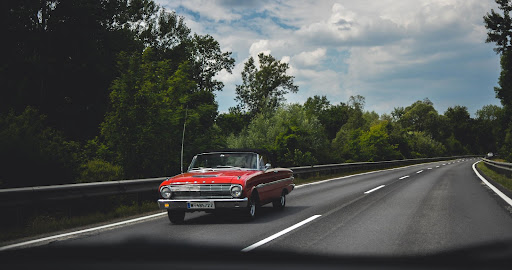The word ‘vintage’ is usually applied to cars that were built before the Second World War, although some believe they have to be pre-1930 to qualify. The very first car was invented in the late 19th century, by an Austrian called Karl Benz, so the 1940s seems a reasonable cut off point.
Car designs have changed a lot over subsequent decades and the look is one way that people identify a vintage car from a modern one. The main differences between modern and classic vehicles are what we will look at here, as well as which is the better choice to buy.
Vintage vs. Modern Cars
- Tech
Inevitably, technology is the single biggest change and one that applies to all vintage vehicles compared with modern ones. Modern cars benefit from advances in technology like automatic headlights and emergency brakes that undeniably make them safer to drive.
However those who love vintage cars will tell you that many of the tech additions to modern vehicles are pointless bells and whistles. Furthermore, the comparative low-tech feel of classic cars can put the driver in greater control and make the experience more enjoyable for skilled drivers.
- Parts
Maintaining a vintage car can cost a lot more. For example, replacing the tires on a modern car just means buying quality radial performance tires like Yokahama ones that will last a long time without setting you back a fortune.
However most vintage cars are designed to take bias-ply tires and fitting radial ones can cause wheel cracks. That is just one example of the problems finding affordable parts.
- Size
You might expect newer cars to be smaller and less bulky, but that is often not the case. Take the Porsche 911 for example – it is now 100mm wider than the vintage makes.
A classic Mini Cooper will weigh almost half as much as recent models, so vintage can often mean a lighter drive. This is true for cars of the same brand and when compared across different brands, as increased size and weight is a phenomenon of the modern era.
- Performance Power
There can be no question that modern cars offer greater power and mileage than vintage ones. Engine tech has undergone a revolution since the days of classic cars and current engines are much more powerful and fuel efficient.
That means the driver of a modern car will usually get far more miles out of a tank of fuel than someone driving a vintage car could hope for. Not all classic models guzzle the fuel though.
Those that have smaller engines, such as Minis, Morris Minors and Ford Anglias, compare very favorably to modern saloon cars such as the BMW 316 or Vauxhall Astra in overall fuel efficiency.
- Look and Build
Most car enthusiasts would agree that many classic vehicles look better. That is not true of all of them, but a mid-century Chevrolet or a Studebaker is so beautiful that it is a genuine collector’s item.
Modern Chevrolets are still good cars, but lack that distinctive visual appeal. A classic Corvette, Oldsmobile or Studebaker has a unique shape and luxurious interiors made of materials like leather.
- Buying and Selling
A quality vintage car tends to gain in value, while modern ones start to depreciate almost immediately. For many drivers that will not be a problem though, because they are buying it for right now, rather than as an investment.
It does mean that you will almost certainly get a lower price when you sell a modern car but this reflects different priorities. People buying collectable classic cars want their values to increase, while modern car buyers want something reliable, fuel efficient and easy to maintain.
Modern cars are unlikely to achieve collectable status in the future but they have definite advantages in the present.











